- News
- Reviews
- Bikes
- Components
- Bar tape & grips
- Bottom brackets
- Brake & gear cables
- Brake & STI levers
- Brake pads & spares
- Brakes
- Cassettes & freewheels
- Chains
- Chainsets & chainrings
- Derailleurs - front
- Derailleurs - rear
- Forks
- Gear levers & shifters
- Groupsets
- Handlebars & extensions
- Headsets
- Hubs
- Inner tubes
- Pedals
- Quick releases & skewers
- Saddles
- Seatposts
- Stems
- Wheels
- Tyres
- Tubeless valves
- Accessories
- Accessories - misc
- Computer mounts
- Bags
- Bar ends
- Bike bags & cases
- Bottle cages
- Bottles
- Cameras
- Car racks
- Child seats
- Computers
- Glasses
- GPS units
- Helmets
- Lights - front
- Lights - rear
- Lights - sets
- Locks
- Mirrors
- Mudguards
- Racks
- Pumps & CO2 inflators
- Puncture kits
- Reflectives
- Smart watches
- Stands and racks
- Trailers
- Clothing
- Health, fitness and nutrition
- Tools and workshop
- Miscellaneous
- Buyers Guides
- Features
- Forum
- Recommends
- Podcast
TECH NEWS
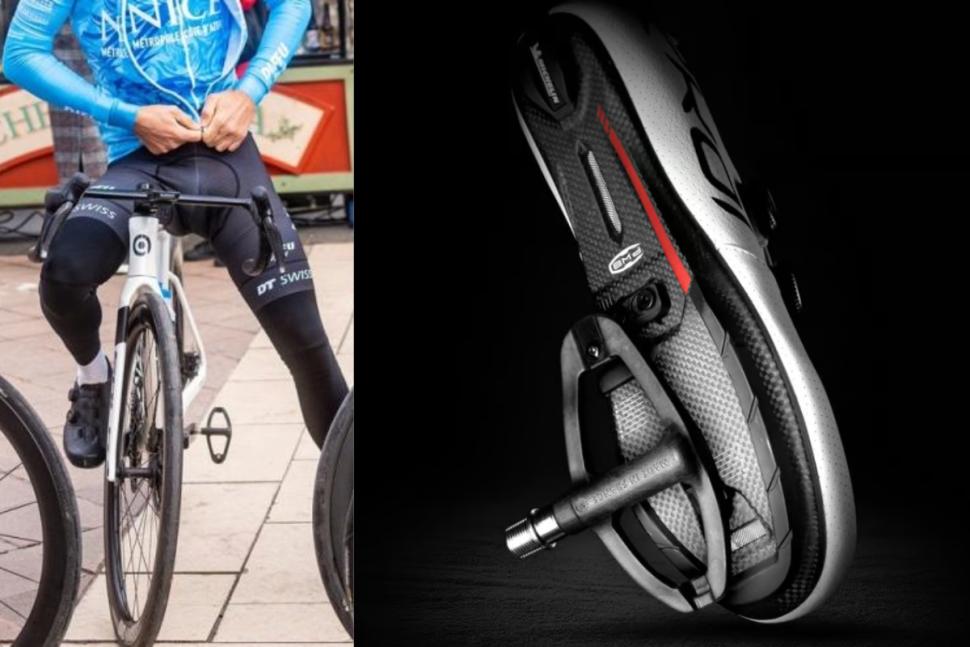 2025 Ekoi PW8 pedal system
2025 Ekoi PW8 pedal systemEkoi's radical road cycling pedal system that "has Look and Shimano scared" is now available to buy, priced at £592 with compatible shoes
Ekoi's attempt to revolutionise cycling pedals has hit the market, the PW8 system priced at a nice round £592.12 for the figure-of-eight shaped pedal and compatible carbon-soled road shoe.
It's a system that has been in development for more than four years, and the French cycling brand promises its patented PW8 concept - self-described as "the new pedal that has Look and Shimano scared" - offers some obvious benefits over current pedal and cleat designs, namely being lighter, faster and easier to walk in.
It has also reportedly attracted interest from professional cycling teams, such as UAE Team Emirates and Team Ineos Grenadiers, and has been used by UCI Continental teams Nice Métropole and Burgos. The product page on the Ekoi website boasts that ambassadors such as Michele Bartoli and Philippe Gilbert have already racked up 18,000km and 5,000km respectively in the pedals and shoes, and some test riders have put in as much as 30,000km.
> Can Ekoi's radical PW8 system revolutionise bike pedals for the first time in 40 years?
However, they're now available to the wider public, the design utilising a significantly longer pedal than the most popular current products and the shoe featuring a compatible sole which completes the PW8 system.
At 225g total weight for both pedals and cleats, the PW8 can boast weight savings over other pedal options. Look's Keo Blade with cleats weighs a claimed 300g, while Shimano's top pedal is the Dura-Ace PD-R9100 model, with a claimed weight of 228g, about 300g in total with cleats.
Ekoi also believes most users will enjoy a saving of up to eight watts by moving to its system.
"We have seen [in] 100%, of the tests we've made, a benefit", Ekoi told us when we visited last summer. "It's not that when you [fit] this, every single rider will save eight watts. It can depend on the rider. But yes, each time we have made some tests, statistically it is more efficient."
The PW8's stack height of 8mm is shorter than Dura-Ace pedals and Look Keo blade pedals too, those two designs having a stack height of 14.6 and 14.8mm respectively, a shorter length that Ekoi says is "good for aerodynamics", a claim backed up by what we've seen other manufacturers working towards. For example, Wahoo notes this as a positive of its Speedplay pedals, and the lower stack height is seen as an advantage of Shimano's Dura-Ace pedals compared to Ultegra.
[Ekoi PW8 pedal system vs Shimano stack height]
Perhaps the most striking aspect of the PW8 system is the size and shape of the pedal, Ekoi noting it is the largest contact surface on the market and more than twice the size of the contact surface on Look's Keo Blade model.
"This has two interests: power transfer and also the feeling of stability," Raphaël Dalle, who heads up the brand's design, suggested.
One potential downside of the new system, especially for amateur athletes, is that the PW8 pedals won't work with current road shoes which often have a three-bolt cleat design. Although Ekoi has been the driving force behind the PW8 system, the brand says it doesn't want the system to be exclusive to Ekoi shoes, and hopes that in the future other shoe manufacturers will adopt it once they see the advantages.
For now, though, it is only available with the compatible Ekoi shoe, priced at £592.12 for the entire system, although the brand is offering risk-free returns within 60 days, such is its confidence in the design.
"For 40 years since the advent of clipless pedals, cycling hadn't seen a real innovation," Ekoi states. "The patented PW8 concept was developed over more than four years with one goal: to offer a new concept that is more efficient, lighter, more aerodynamic, easier to use, and more stylish.
These performance gains are achieved thanks to the minimized axle/sole distance at 8 mm coupled with an unmatched contact surface of 1500 mm². Ekoi is the first brand to have developed a sole specifically designed for PW8."
When we spoke last summer the brand was keen for the pedal not to be pigeonholed as only a product for the pros and they come with float options between 0° and 6°. The reduced profile of the cleat, which is recessed below the tread of the shoe, is designed to make them easier to walk in than a road shoe with a traditional cleat.
Ekoi's website currently shows the PW8 system available in shoe sizes ranging from 39 to 48 (6.5-13 UK sizes).
We first spotted the design around this time last year when riders from the Nice Métropole professional team used them, Ekoi having "already put €2 million into development".
Not long after though the team was left scrambling when UCI officials at the Etoile de Bessèges stage race told them to switch to alternative pedals right before the penultimate stage – despite them having already been used in Marseille the week before.
It was reported that the ban was imposed due to an administrative oversight – suggesting that an application for the use of a prototype had been submitted, but it had not been approved before the race.
When we contacted Ekoi for a comment, the brand said it was "just an admin issue" and the "UCI doesn't have any problem with us".
* One of our staff members was briefly shown a lower UK price when browsing the Ekoi website, so we contacted Ekoi for a clarification, the brand confirming the UK price is indeed £592.12.
Dan is the road.cc news editor and joined in 2020 having previously written about nearly every other sport under the sun for the Express, and the weird and wonderful world of non-league football for The Non-League Paper. Dan has been at road.cc for four years and mainly writes news and tech articles as well as the occasional feature. He has hopefully kept you entertained on the live blog too.
Never fast enough to take things on the bike too seriously, when he's not working you'll find him exploring the south of England by two wheels at a leisurely weekend pace, or enjoying his favourite Scottish roads when visiting family. Sometimes he'll even load up the bags and ride up the whole way, he's a bit strange like that.
Latest Comments
- Rendel Harris 2 sec ago
A lot of people leasing cars on the Motability scheme are not capable of mounting an etrike, let alone using it as their sole means of transport....
- Mr Anderson 6 min 51 sec ago
I thought Pro riders were opposed to the ban on the supertuck, have they now reflected on this and now want speed limiters instead?
- Capt Sisko 9 min 7 sec ago
One of the reasons I like Torq products is because they do not use Sortbitol as a sweetener. As those that are sensitive to Sorbital will know, and...
- webbierwrex 30 min 13 sec ago
I came to say the opposite, I always liked Giro shoes but they're insanely narrow. I hope they did change the fit.
- Aluminium can 5 hours 19 min ago
Frame weight is about a hundred grams less than a CAAD 12 disc, which can be picked up cheap these days on gumtree. Heck, get the CAAD12 non disc...
- Dnnnnnn 9 hours 13 min ago
You're too kind. They just seem to be unpleasant trolls.
- Jogle 10 hours 8 min ago
And in Southampton today we had another example of those entitled ambulances going through red lights without a care for anyone else!...
- TheBillder 11 hours 22 min ago
The spokes and nipples are not anodised for environmental reasons, but the rims are. Which is a lot more metal. Hmm...
- Rendel Harris 12 hours 1 min ago
I'm afraid so, anything operated by TfL apart from the Woolwich ferry and the Silvertown Tunnel bike bus when it opens next month.
- chrisonabike 12 hours 44 min ago
That's a bit hard on the cat...
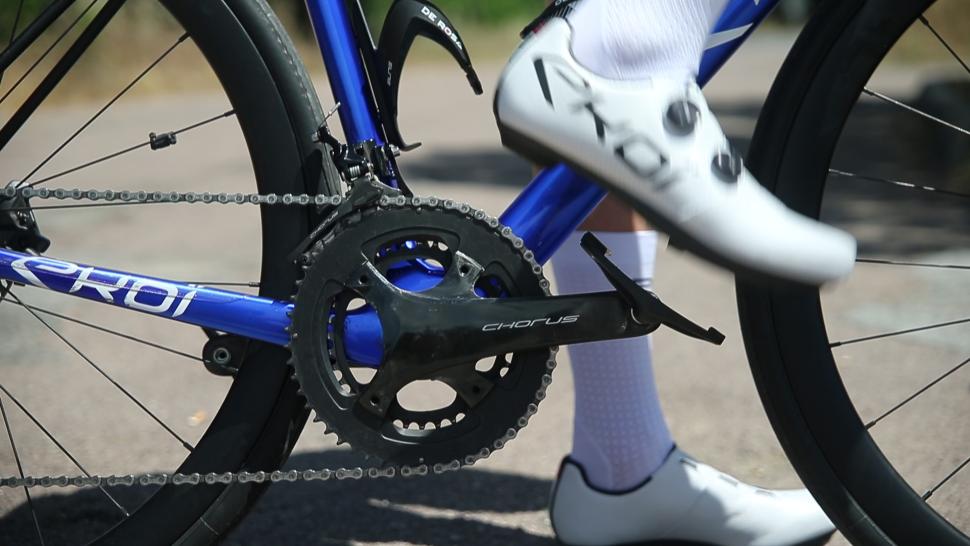
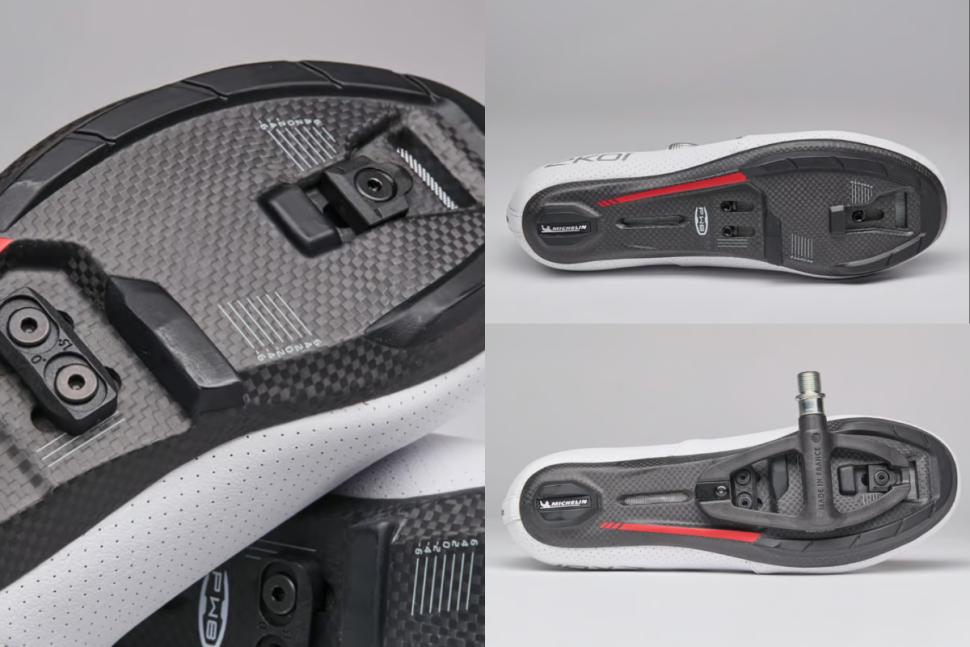
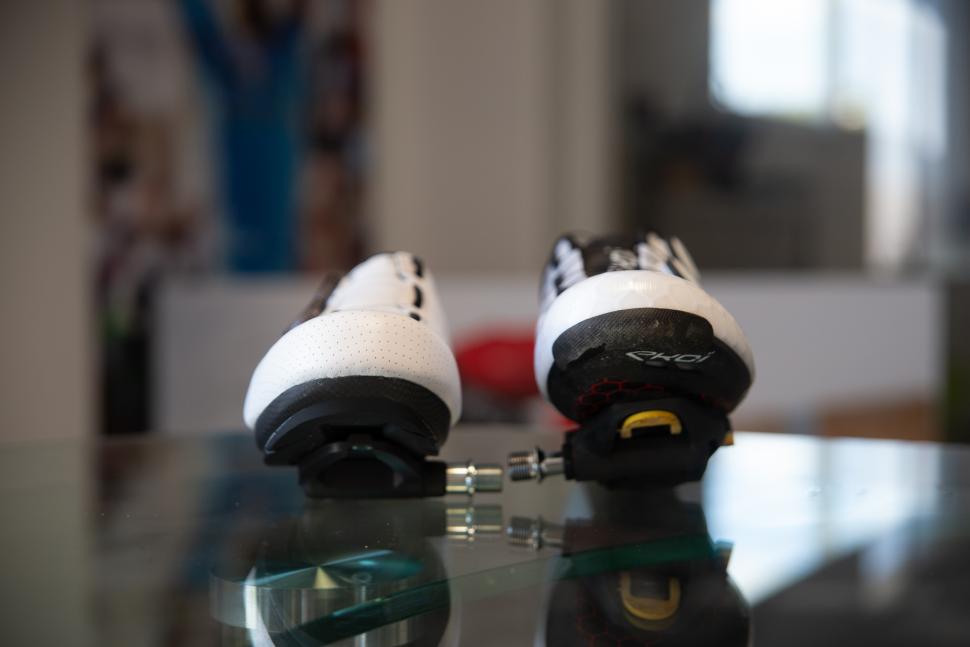
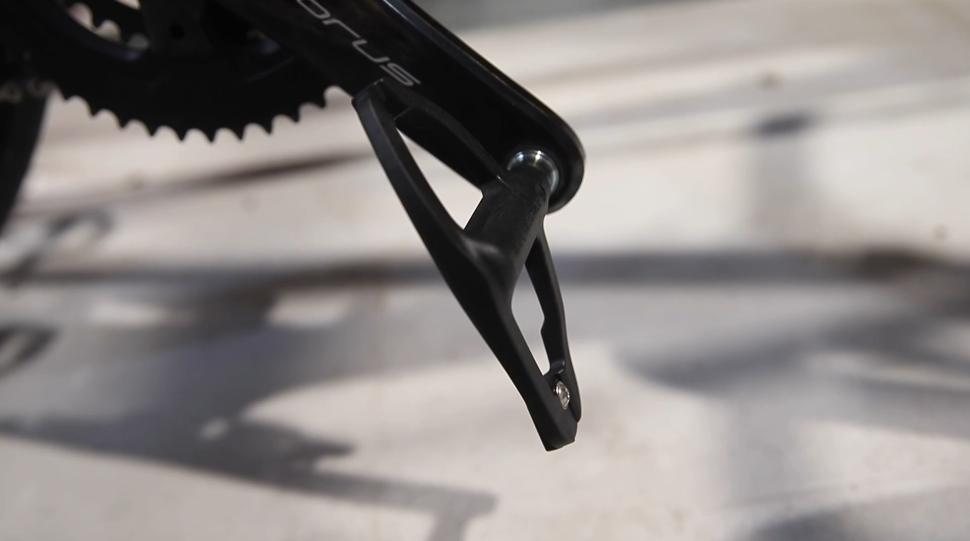
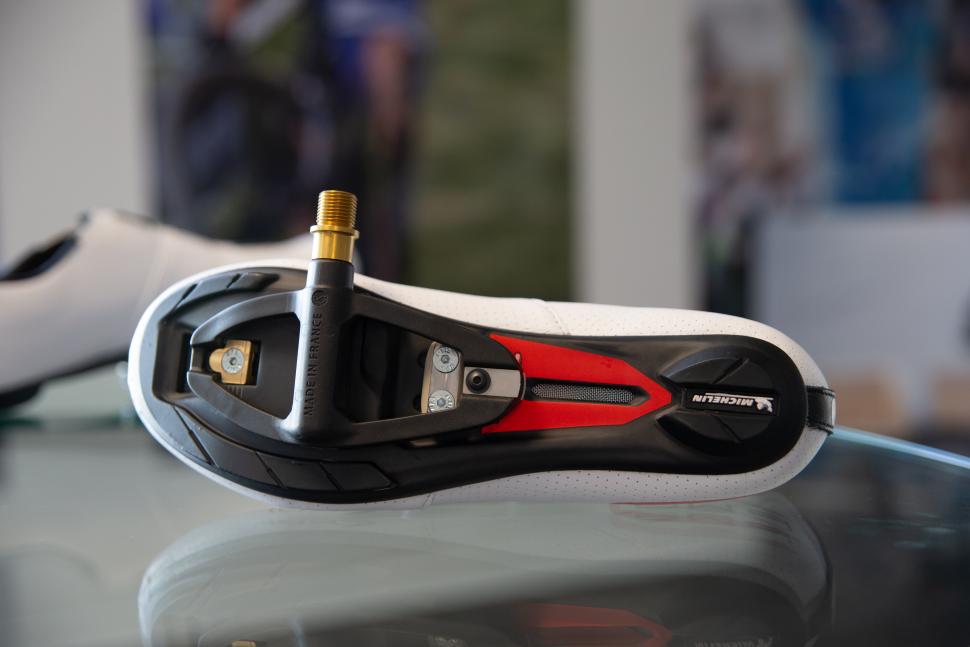
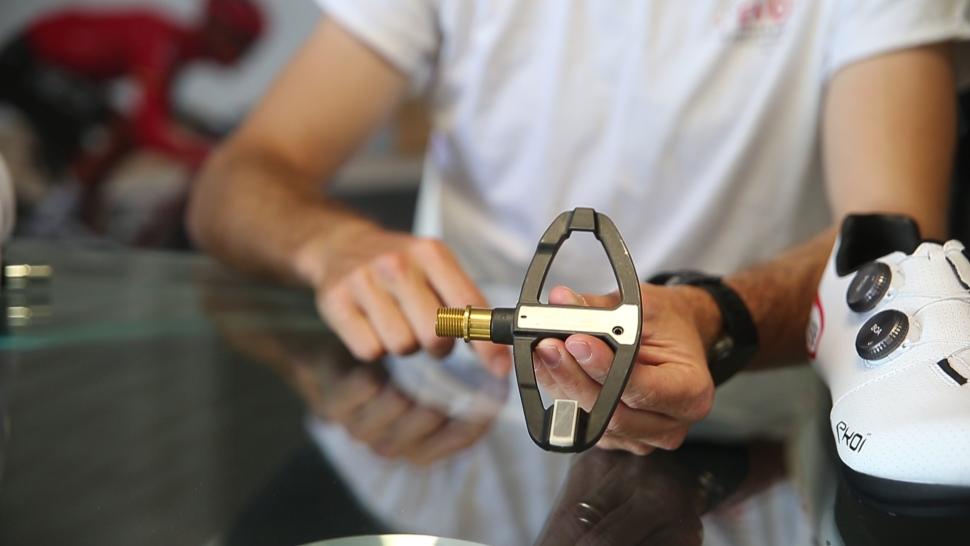
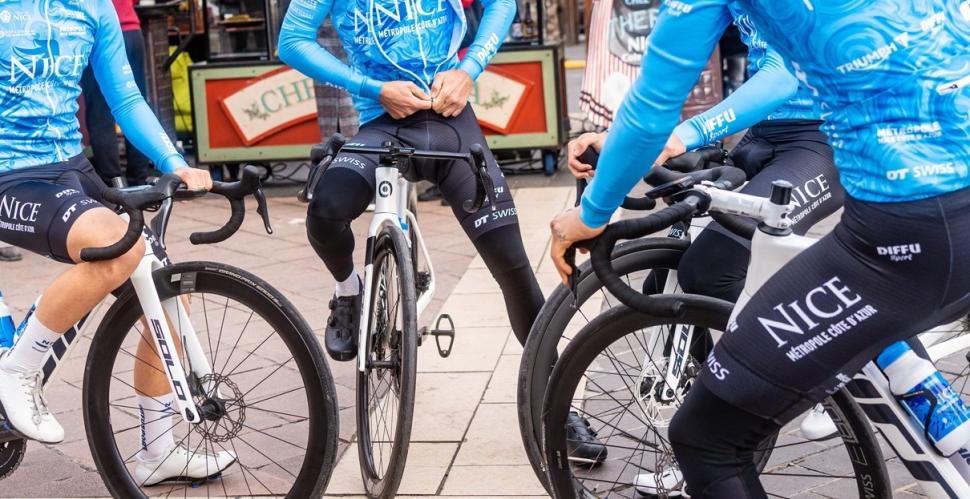
Add new comment
23 comments
What ideot invented this, you have to buy pedels AND she,s, SO my Sidi,s are no good for them, they sit down and think of more ways of get peoples money
Some of those spindle placements look pretty far forward; not sure that's particularly good for pedal efficiency or comfort/fit.
He lost me in the video when he claimed that as you can raise your heel up to 30,000 times during a ride, the lighter weight will save you energy in the pedal stroke; it doesn't matter of the pedal weighs 10kg, there's another one at 180 degres of the crank balancing it out
Yes, there's a pedal on one side counteracting what you do on the other, so you'd say that evens each other out.
But that's just theory. Do you really think you wouldn't notice if both your pedals were 1kg heavier?
You would notice the overall bike weight increase, but that's not what we're talking about; he specifically states that you will save effort lifting your foot in the pedal stroke, which is false. This isn't theory, counterbalance is an engineering priniciple that's been understood for centuries
I was not saying counterbalance isn't a thing. I was saying that you definitely will notice it, and not just because of the overall weight gain.
Try it on a stationairy bike. Attach a brick to each pedal, and tell me how that feels.
It's much harder. I can't clip in any more.
Hahaha :-P
Balance a brick on each side of a set of scales and place a coin on one side. Now put 2 bricks on each side and the same coin on one side again and compare the difference in rate of descent, if any
I don't know how I can make it any more clear, so I will just repeat myself: "'I was not saying counterbalance isn't a thing".
I see your point, and I agree with it: the sides balance each other out if they are equal in weight.
But you keep stepping around my point: heavier pedals are noticeable, and not just because of the overall weight increase of the bike.
You said a weight increase of 10kg wouldn't make a difference, I'm saying it would, because the balance of the two pedals is not the only factor having a role in how your pedalling feels.
I see a problem... it looks like the pedal body contacts directly with the sole of the shoe.
Assuming there is float, that means those two surfaces will rub. Rubbing equals wearing. However you can't change the sole of the shoe, or indeed the pedal plate, so when either of these wear, the performance of the pedal system will deteriorate. And that's the end of that.
I was all about to poo-poo the new design until I saw the bottom of the shoes and read this:
"The reduced profile of the cleat, which is recessed below the tread of the shoe, is designed to make them easier to walk in than a road shoe with a traditional cleat."
I currently ride my road bike with SPD pedals because I hate walking like a duck on ice skates with the current design for road shoes and pedals. However, the tiny platform of the SPD is less than idea. I'd be very open to a large platform pedal that resulted in a shoe design that allowed for some off-bike walkability. (Is 'walkability' a word?)
Duplicate post
Have you considered Shimano's PD-ES600 pedals? A bit of a best of both worlds solution that was well reviewed on this site:
https://road.cc/content/review/shimano-pd-es600-spd-pedals-278807
and available online for about 50 quid as opposed to about £600!
Not sure about the rest of the claims, but the UCI minimum 6.8kg weight limit includes fixed items like pedals but not shoes. And as we know road bikes can be a fair bit lighter than that limit.
Meaning that a larger heavier rigid pedal + matched lighter flexible shoe combination offers gram counters the chance to achieve a lower overall bike + shoe system weight.
Interesting development and a bit surprising no one has tried it before.
Great idea but the price needs to come down and the range of shoes needs to expand to make it viable. Hopefully they do gain some traction because new tech is always good and competition is always good.
I was burnt before by buying into Speedplay X pedals - lovely pedals, but when Speedplay were bought by Wahoo they were discontinued and the cleats are no longer available. I would be concerned about the longevity of this product if it doesn't take off. And having to fork out for a dedicated shoe will turn out to be a marketing problem. I don't believe Look and Shimano will be too worried about this, after all you can choose whatever shoe you want, cleats are widely available, as are compatible power meter pedals.
A brave move by Ekoi.
Exactly - it's a silly headline. Scared = clickbait, not reality.
If you've still got the pedals there seem to plenty of cleats on eBay starting at around £14 a pair - I don't know if they are any good but worth a look?
I would be very wary about buying the cleats typically seen on Ebay if you have X series pedals. The cleats I see there are for the Zero range, which (though similar in appearance) operate differently and were not interchangeable when both types were still being made by Speedplay. I would be interested to know if anyone has tried them, as I have several pairs of X pedals having used them for 25 years and still preferring them to any other system!
So you have to buy shoes and pedals as a package but what if you have more than one bike, I don't particularly want or need 6 pairs of shoes if I planned on converting to their system
Just because you can...
Interesting pedal but I think they'll need to unclip the pedal price from the shoe price as £592 is off-putting.